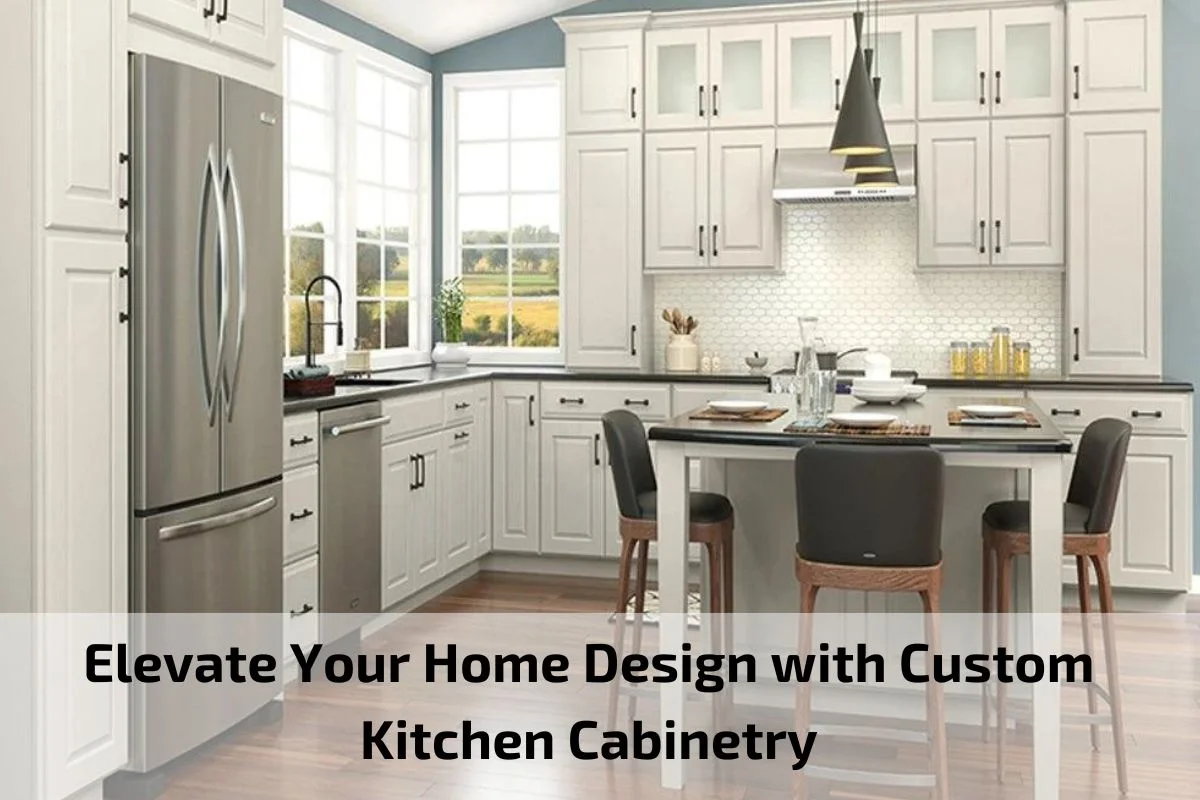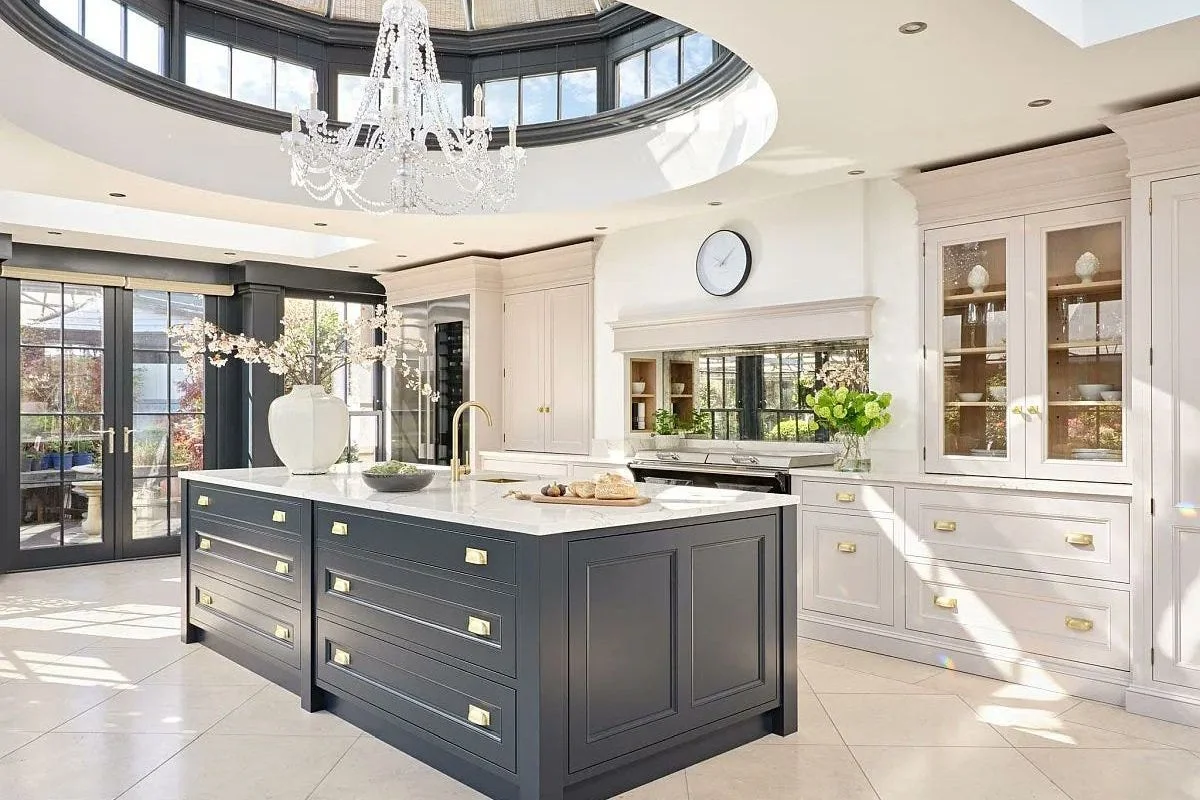Elevate Your Home Design with Custom Kitchen Cabinetry
Introducing a touch of luxury and sophistication to your home begins with elevating your kitchen design. One of the most transformative elements in any kitchen space is the cabinetry. Custom kitchen cabinetry not only adds functional storage but also serves as a statement piece, reflecting your unique style and enhancing the overall aesthetic of your home. Whether you prefer sleek modern lines, timeless traditional designs, or something uniquely your own, custom cabinetry offers endless possibilities to tailor every detail to your exact specifications. Let’s explore how custom kitchen cabinetry can elevate your home design to new heights of elegance and functionality.
The importance of Custom-Made Kitchen Cabinets in design
Custom-made kitchen cabinets play a pivotal role in the overall design of a kitchen, serving as both functional storage solutions and key aesthetic elements. Their importance cannot be overstated, as they contribute significantly to the functionality, efficiency, and visual appeal of the space. Here’s why custom-made kitchen cabinets are essential in design:
Tailored Fit: One of the most significant advantages of custom-made kitchen cabinets is their ability to be tailored to fit the exact dimensions of the space. Unlike pre-made cabinets that come in standard sizes, custom cabinets can be designed to maximize every inch of available space, ensuring a seamless fit and optimal utilization of the kitchen layout.
Personalization: Custom-made cabinets offer unparalleled opportunities for personalization and customization. Homeowners have the freedom to choose from a wide range of materials, finishes, hardware, and design features to reflect their unique style preferences and complement the overall aesthetic of the kitchen.
Optimized Storage: Custom cabinets can be designed to address specific storage needs and organizational preferences. Whether it’s incorporating specialized storage solutions for pots and pans, utensils, spices, or pantry items, custom cabinets can be tailored to maximize storage capacity and improve accessibility, making meal preparation and cooking more efficient.
Enhanced Aesthetics: Custom-made kitchen cabinets elevate the visual appeal of the kitchen, serving as focal points that tie together the design elements of the space. With custom cabinets, homeowners have the flexibility to create cohesive design themes, experiment with different styles and finishes, and incorporate unique architectural details to achieve their desired aesthetic vision.
Quality Craftsmanship: Custom cabinets are crafted with meticulous attention to detail and precision craftsmanship. Skilled artisans and cabinetmakers use high-quality materials and construction techniques to ensure durability, longevity, and structural integrity, resulting in cabinets that not only look beautiful but also stand the test of time.
Increased Property Value: Well-designed custom cabinets can significantly enhance the value of a home. Potential buyers are often willing to pay a premium for kitchens equipped with custom cabinets, recognizing the investment in quality craftsmanship, design customization, and functional storage solutions.
Definition and differentiation from pre-made options
Custom-made kitchen cabinets are meticulously crafted to fit the specific dimensions, style preferences, and functional requirements of a homeowner’s kitchen space. Unlike pre-made or stock cabinets, which are mass-produced in standard sizes and designs, custom cabinets are built to order, offering a high degree of customization and personalization.
Differentiation from pre-made options lies in several key aspects:
Tailored Design: Custom cabinets are designed and built to fit the exact specifications of the kitchen space, ensuring a seamless fit and optimal utilization of available space. In contrast, pre-made cabinets come in standard sizes and may require filler panels or modifications to fit irregular spaces.
Personalization: Custom cabinets offer homeowners the freedom to choose from a wide range of materials, finishes, hardware, and design features to reflect their unique style preferences and complement the overall aesthetic of the kitchen. Pre-made cabinets, on the other hand, offer limited options for customization and may not fully align with the homeowner’s design vision.
Optimized Storage Solutions: Custom cabinets can be tailored to address specific storage needs and organizational preferences, incorporating specialized storage solutions such as pull-out shelves, drawer dividers, spice racks, and built-in trash bins. Pre-made cabinets often have standard storage configurations and may not offer the same level of customization for optimizing storage space.
Quality Craftsmanship: Custom cabinets are crafted with meticulous attention to detail and precision craftsmanship, using high-quality materials and construction techniques to ensure durability, longevity, and structural integrity. While some pre-made cabinets may be of decent quality, others may be constructed with lower-quality materials and may not offer the same level of durability and craftsmanship as custom options.
Advantages and Disadvantages of Custom Cabinets
Tailored Design: Custom cabinets are designed to fit the exact dimensions and layout of your kitchen, ensuring a seamless and precise fit that maximizes space utilization.
Personalization: With custom cabinets, you have the freedom to choose from a wide range of materials, finishes, hardware, and design features to match your unique style and preferences.
Optimized Storage: Custom cabinets can be tailored to address your specific storage needs and organizational preferences, incorporating specialized solutions such as pull-out shelves, drawer dividers, and built-in organizers.
Quality Craftsmanship: Custom cabinets are typically crafted with meticulous attention to detail and precision craftsmanship, using high-quality materials and construction techniques that ensure durability and longevity.
Enhanced Aesthetics: Custom cabinets can elevate the overall look of your kitchen, serving as focal points that tie together the design elements of the space and enhance its visual appeal.
Disadvantages of Custom Cabinets:
Higher Cost: Custom cabinets are often more expensive than pre-made or stock cabinets due to the personalized design, craftsmanship, and quality materials involved.
Longer Lead Time: Custom cabinets require a longer lead time for design, fabrication, and installation compared to pre-made options, which may delay your kitchen renovation project.
Limited Availability: Custom cabinets may have limited availability depending on the availability of skilled craftsmen and materials, which can make them less accessible in certain regions or markets.
Potential for Errors: The customization process for custom cabinets leaves room for errors or miscommunications between the homeowner, designer, and manufacturer, which could result in design flaws or dissatisfaction with the final product.
Dependence on Professional Installation: Custom cabinets typically require professional installation to ensure proper fit and function, which adds to the overall cost of the project and may require scheduling coordination with contractors
Designing Your Dream Kitchen: Tips and Considerations
Designing your dream kitchen is an exciting journey that involves careful planning, creativity, and attention to detail. Whether you’re starting from scratch or renovating an existing space, there are several tips and considerations to keep in mind to ensure that your kitchen design reflects your style, meets your needs, and functions efficiently. Here are some key tips and considerations for designing your dream kitchen:
Assess Your Needs: Before diving into the design process, take some time to assess your needs and priorities in terms of functionality, storage, and layout. Consider how you use your kitchen on a daily basis and identify any specific features or amenities that are essential for your lifestyle.
Set a Budget: Establishing a realistic budget is crucial for guiding your design decisions and ensuring that you stay within your financial constraints. Consider factors such as materials, appliances, labor costs, and contingency expenses when setting your budget.
Consider Layout Options: The layout of your kitchen will have a significant impact on its functionality and flow. Explore different layout options, such as galley, L-shaped, U-shaped, or open-concept designs, and choose one that best suits your space and needs.
Maximize Storage: Adequate storage is essential for keeping your kitchen organized and clutter-free. Incorporate a mix of cabinets, drawers, shelves, and pantry space to accommodate your storage needs. Consider custom storage solutions, such as pull-out shelves, drawer dividers, and vertical organizers, to maximize space efficiency.
Choose Quality Materials: Invest in high-quality materials that are durable, easy to maintain, and visually appealing. Consider factors such as cabinetry materials, countertop surfaces, flooring options, and backsplash materials when selecting materials for your kitchen design.
Prioritize Functionality: Focus on designing a kitchen that functions efficiently and meets your practical needs. Ensure that key elements such as the sink, stove, refrigerator, and work surfaces are arranged in a logical and ergonomic manner to facilitate meal preparation and cooking.
Incorporate Personal Style: Infuse your personality and style into the design by selecting finishes, colors, and decorative elements that reflect your taste and preferences. Whether you prefer a sleek modern look, a cozy traditional style, or something in between, choose design elements that resonate with you.
Consider Lighting: Lighting plays a crucial role in enhancing the ambiance and functionality of your kitchen. Incorporate a mix of task lighting, ambient lighting, and accent lighting to create a well-lit and inviting space. Consider options such as recessed lights, pendant lights, under-cabinet lighting, and skylights to illuminate different areas of the kitchen.
Think Long-Term: When designing your dream kitchen, consider how your needs may evolve over time. Choose timeless design elements and durable materials that will stand the test of time and accommodate future changes or updates to your lifestyle.
Seek Professional Advice: If you’re feeling overwhelmed or unsure about the design process, don’t hesitate to seek professional advice from architects, interior designers, or kitchen design specialists. They can provide valuable expertise, creative solutions, and guidance to help bring your vision to life.
Maintenance and Care Tips
Maintenance and care are essential for preserving the beauty, functionality, and longevity of your kitchen. Here are some maintenance and care tips to keep your kitchen looking its best:
Regular Cleaning: Establish a routine for regular cleaning of your kitchen surfaces, including countertops, cabinets, appliances, and floors. Use mild soap, water, and non-abrasive cleaners to remove dirt, grease, and stains. Avoid harsh chemicals or abrasive scrubbers that can damage surfaces.
Clean Spills Promptly: Spills and splatters should be cleaned up promptly to prevent staining or damage to surfaces. Use a soft cloth or sponge to wipe up spills as soon as they occur, and follow up with a gentle cleaning solution if needed.
Protect Surfaces: Use cutting boards, trivets, and placemats to protect kitchen surfaces from scratches, heat damage, and moisture. Avoid placing hot pots and pans directly on countertops, and use coasters or mats under glasses and dishes to prevent water rings.
Maintain Appliances: Follow the manufacturer’s instructions for cleaning and maintenance of kitchen appliances, including ovens, stovetops, refrigerators, dishwashers, and microwaves. Regularly clean appliance surfaces, filters, and vents to ensure optimal performance and longevity.
Inspect and Repair: Periodically inspect your kitchen for signs of wear, damage, or malfunctioning equipment. Repair or replace any damaged or worn-out components, such as leaky faucets, loose cabinet hardware, or damaged flooring, to prevent further deterioration and ensure safety.
Organize Cabinets and Pantry: Keep your cabinets and pantry organized to make it easier to find items and prevent clutter. Use storage containers, baskets, and shelf organizers to maximize space and keep things tidy. Regularly declutter and purge items that are no longer needed or expired.
Preventative Maintenance: Stay proactive with preventative maintenance tasks to prevent problems before they arise. This may include resealing countertops, lubricating cabinet hinges, tightening loose screws, and checking for leaks under sinks or appliances.
Monitor Moisture Levels: Keep an eye out for signs of excess moisture or water damage in your kitchen, such as warped cabinets, peeling paint, or musty odors. Address any sources of moisture promptly, such as leaks or inadequate ventilation, to prevent mold and mildew growth.
Seasonal Deep Cleaning: Schedule periodic deep cleaning sessions for your kitchen to tackle areas that may be overlooked during regular cleaning, such as behind appliances, inside cabinets, and in hard-to-reach corners. This can help maintain a hygienic and sanitary environment.
Professional Maintenance: Consider hiring professional cleaners or maintenance services for deep cleaning, appliance servicing, and repairs as needed. Professionals can provide thorough and specialized cleaning and maintenance that may be difficult to achieve on your own.
Conclusion
In conclusion, maintaining your kitchen through regular cleaning and care is essential for preserving its functionality, aesthetics, and value. By following the maintenance and care tips outlined above, you can keep your kitchen looking its best and ensure that it remains a clean, organized, and enjoyable space for cooking, dining, and gathering with family and friends.






0 comments